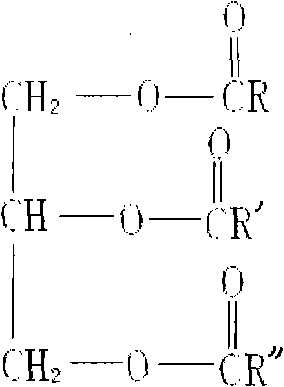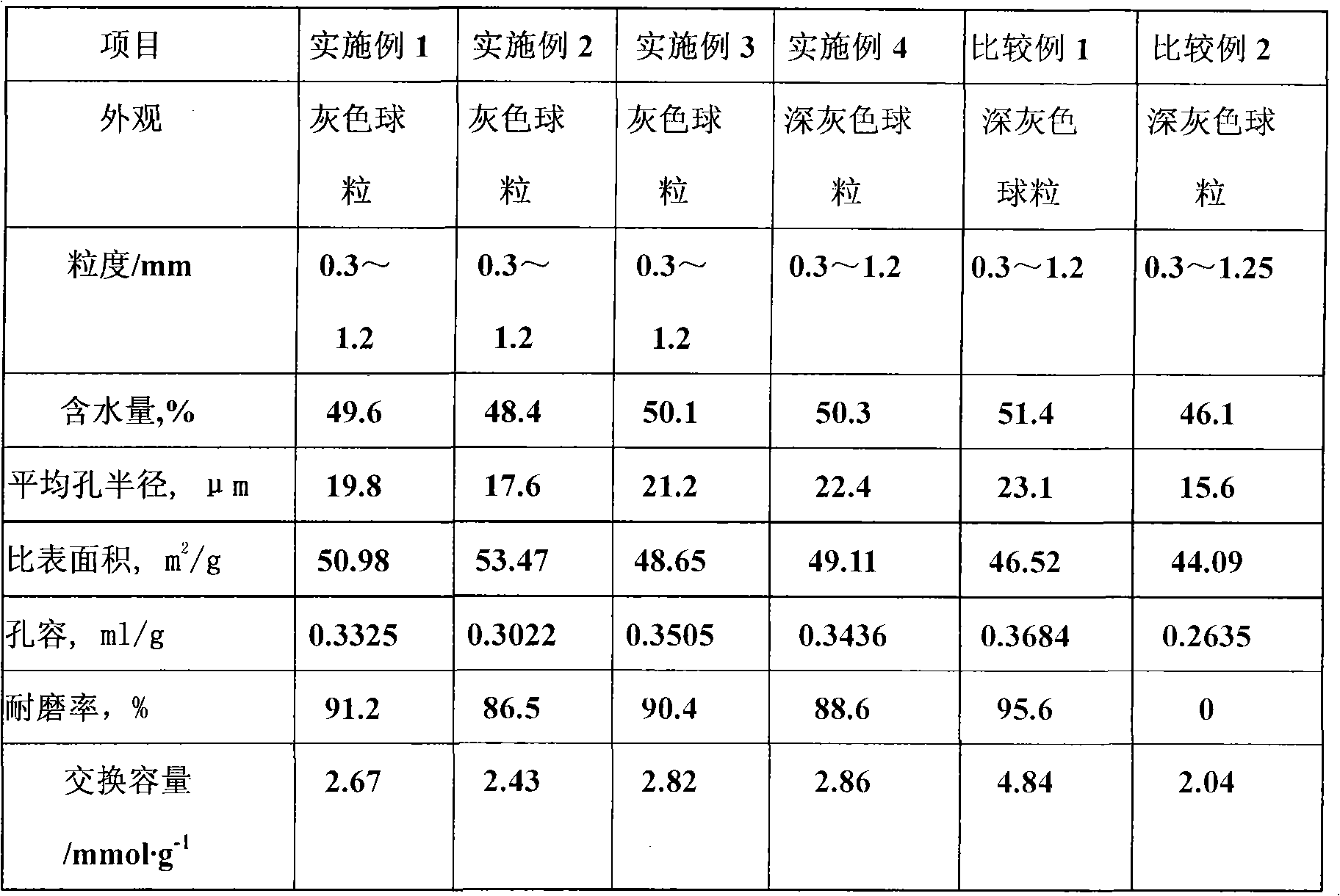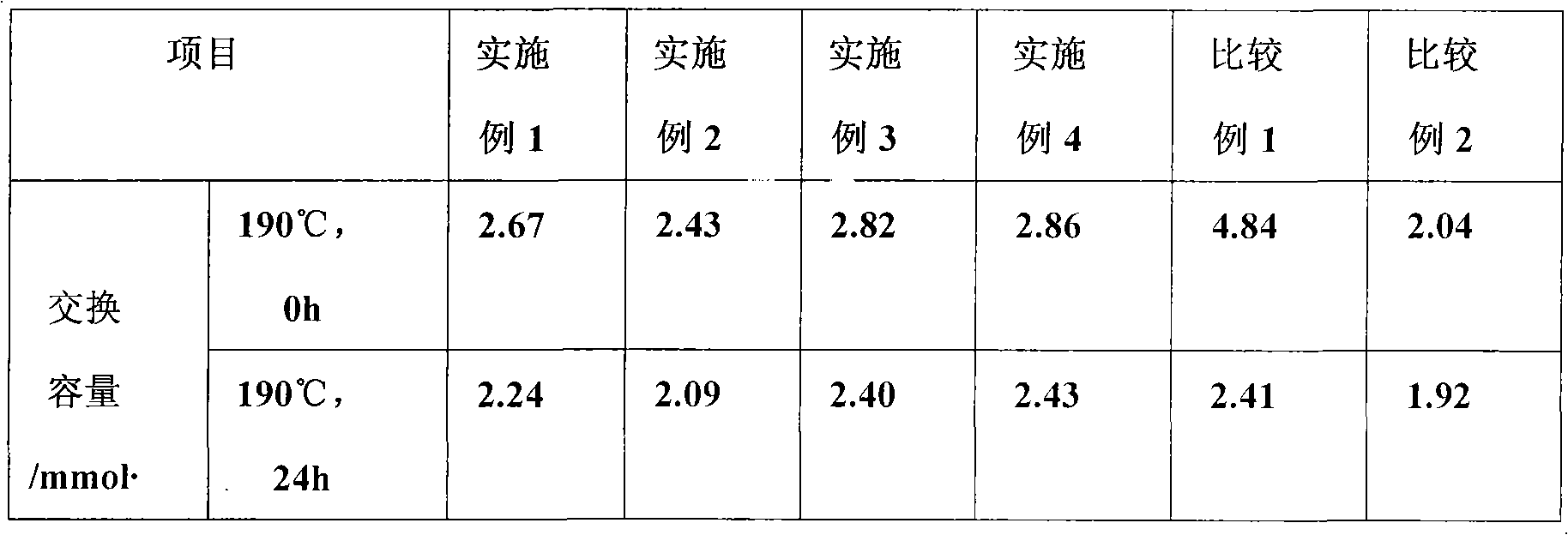Preparation method for high temperature resistant macroporous cation exchange resin catalyst
A technology of macroporous cation and exchange resin, which is applied in the direction of catalyst activation/preparation, chemical instruments and methods, physical/chemical process catalysts, etc., which can solve problems such as environmental pollution, no improvement in service life, and increased energy consumption, and achieve economical improvement. Improvement of performance, dispersion stability, and reduction of energy consumption
- Summary
- Abstract
- Description
- Claims
- Application Information
AI Technical Summary
Problems solved by technology
Method used
Image
Examples
Embodiment 1
[0046] Polymerization: In a 1000mL four-necked flask equipped with stirring, reflux condenser and thermometer, add 400g of water and 0.7g of hydroxymethyl cellulose, heat and stir to dissolve completely and form a uniform aqueous solution. Heat up to 65°C, add 0.03g methylene blue, then add 60g styrene (styrene content ≥ 99%), 50g divinylbenzene (divinylbenzene content 55%), 53g cottonseed oil, 0.9g over Oxidize the organic phase mixture composed of benzoyl, adjust the appropriate stirring speed, raise the temperature to 86°C, and react at constant temperature for 8 hours. The reaction product was filtered and dried at room temperature (water content ≤ 3%) to obtain 160 g of dry polymer white balls, of which 84.8% were polymers with particle sizes ranging from 0.3 mm to 1.0 mm.
[0047] Porogen extraction: Take 120g of dry white balls with a particle size of 0.3mm-1.0mm, put them in a Soxhlet extractor, and connect the extractor to a 2000mL round-bottomed flask containing 1000...
Embodiment 2
[0061] Polymerization: Add 500g of water, 0.8g of carboxymethyl cellulose, and 0.5g of sodium polyacrylate with an average molecular weight of 3 million to a 1000mL four-neck flask equipped with stirring, reflux condenser, and thermometer, heat and stir to dissolve completely , to form a uniform aqueous solution, and then add 0.08g of methylene blue. Be warming up to 75 ℃, add by 124g styrene (styrene content ≥ 99%), 55g divinylbenzene (divinylbenzene content 65%), 72g peanut oil, the organic phase mixture that 1.2g benzoyl peroxide forms, Adjust the stirring speed appropriately, raise the temperature to 86° C., and react at constant temperature for 8 hours. The reaction product was filtered and dried at room temperature (water content ≤ 3%) to obtain 248 g of dry polymer white balls, of which 87.8% were polymers with particle sizes ranging from 0.3 mm to 1.0 mm.
[0062] Porogen extraction: Take 210g of dry white balls with a particle size of 0.3mm~1.0mm, put them in a Soxhl...
Embodiment 3
[0075] Polymerization: In a 1000mL four-neck flask equipped with stirring, reflux condenser, and thermometer, add 500g of water, 0.4g of hydroxyethyl cellulose, and 0.3g of sodium salt of styrene-maleic anhydride copolymer, heat and stir to make it Dissolve completely to form a homogeneous aqueous solution, then add 50g of sodium chloride and 0.05g of methylene blue. Heat up to 65°C, add 50g styrene (styrene content ≥ 99%), 52g divinylbenzene (divinylbenzene content 55%), 55g rapeseed oil, 0.7g organic phase composed of benzoyl peroxide The mixture was adjusted to an appropriate stirring speed, heated to 86° C., and reacted at a constant temperature for 8 hours. The reaction product was filtered and dried at room temperature (water content ≤ 3%) to obtain 155 g of dry polymer white balls, of which 82.7% were polymers with particle sizes ranging from 0.3 mm to 1.0 mm.
[0076] Porogen extraction: Take 120g of dry white balls with a particle size of 0.3mm~1.0mm, put them in a S...
PUM
| Property | Measurement | Unit |
|---|---|---|
| Particle size | aaaaa | aaaaa |
| Conversion rate | aaaaa | aaaaa |
Abstract
Description
Claims
Application Information
 Login to View More
Login to View More - R&D
- Intellectual Property
- Life Sciences
- Materials
- Tech Scout
- Unparalleled Data Quality
- Higher Quality Content
- 60% Fewer Hallucinations
Browse by: Latest US Patents, China's latest patents, Technical Efficacy Thesaurus, Application Domain, Technology Topic, Popular Technical Reports.
© 2025 PatSnap. All rights reserved.Legal|Privacy policy|Modern Slavery Act Transparency Statement|Sitemap|About US| Contact US: help@patsnap.com



